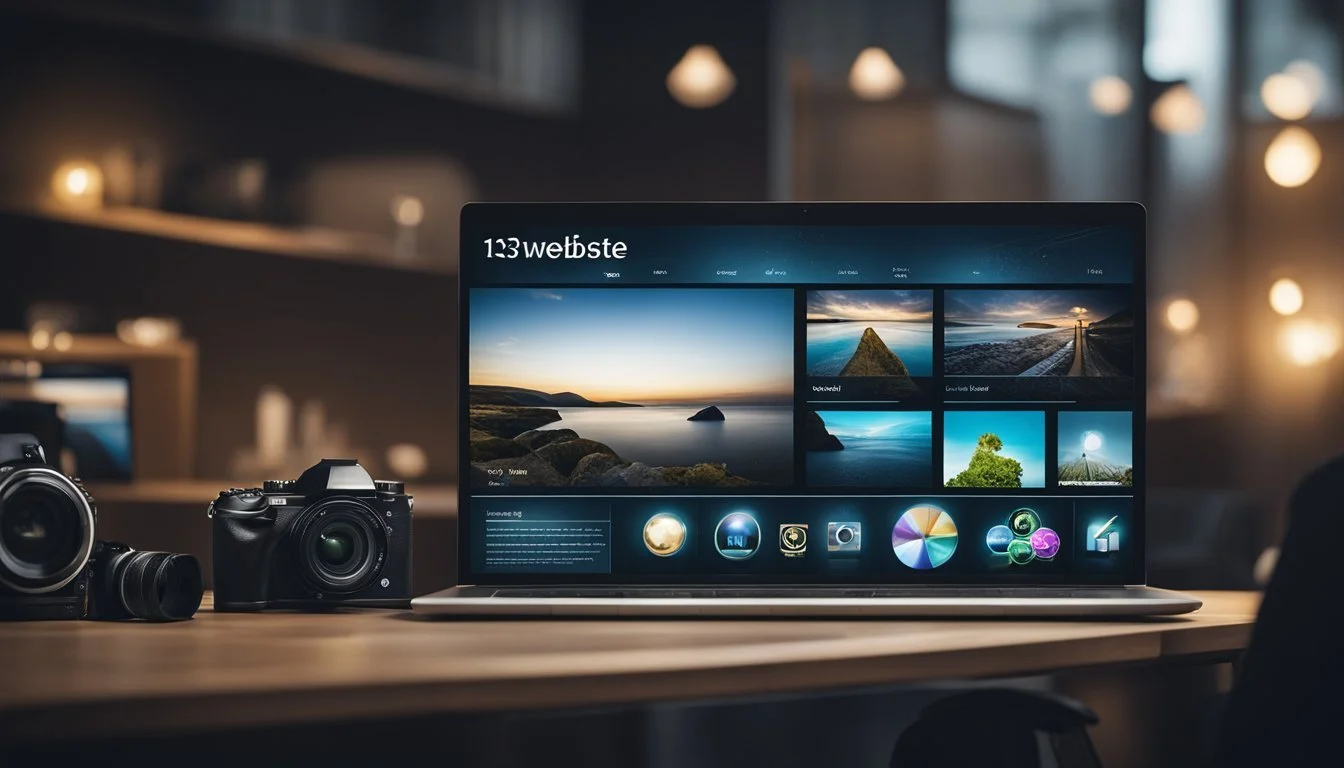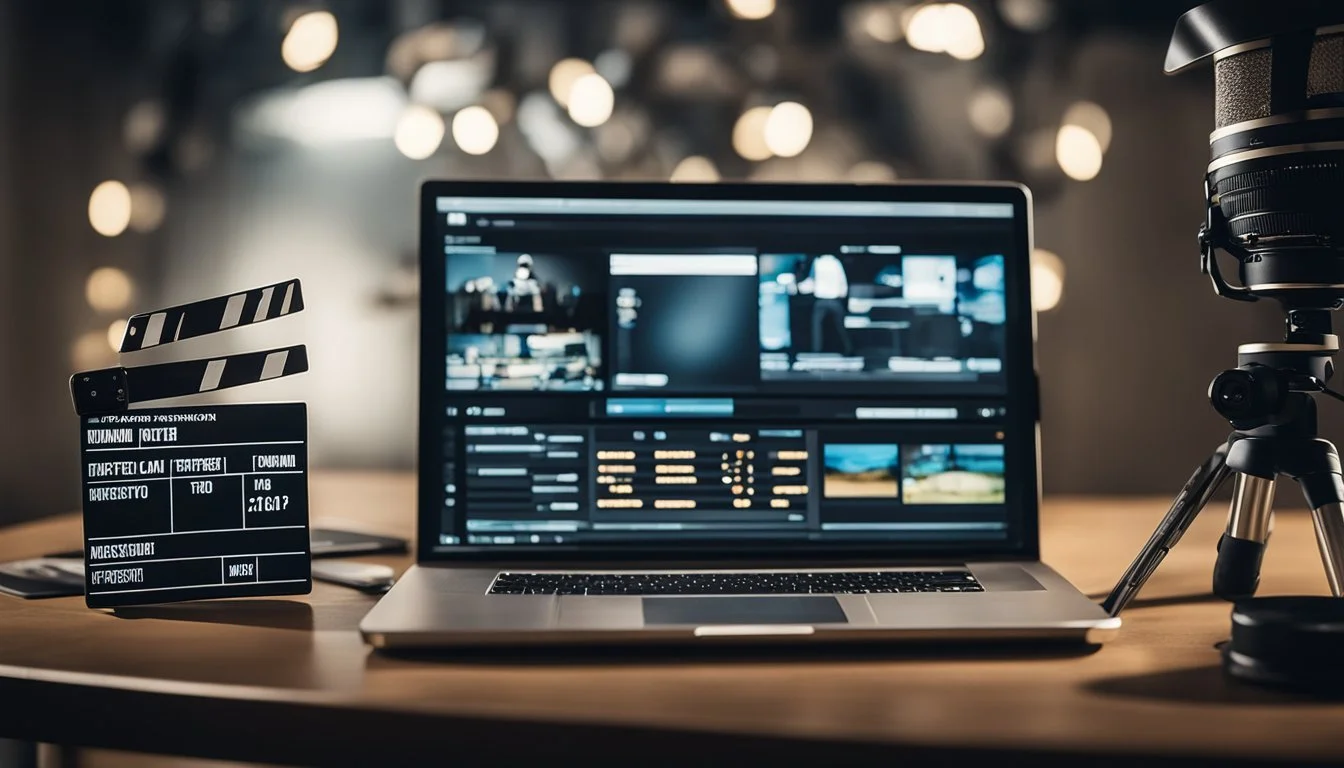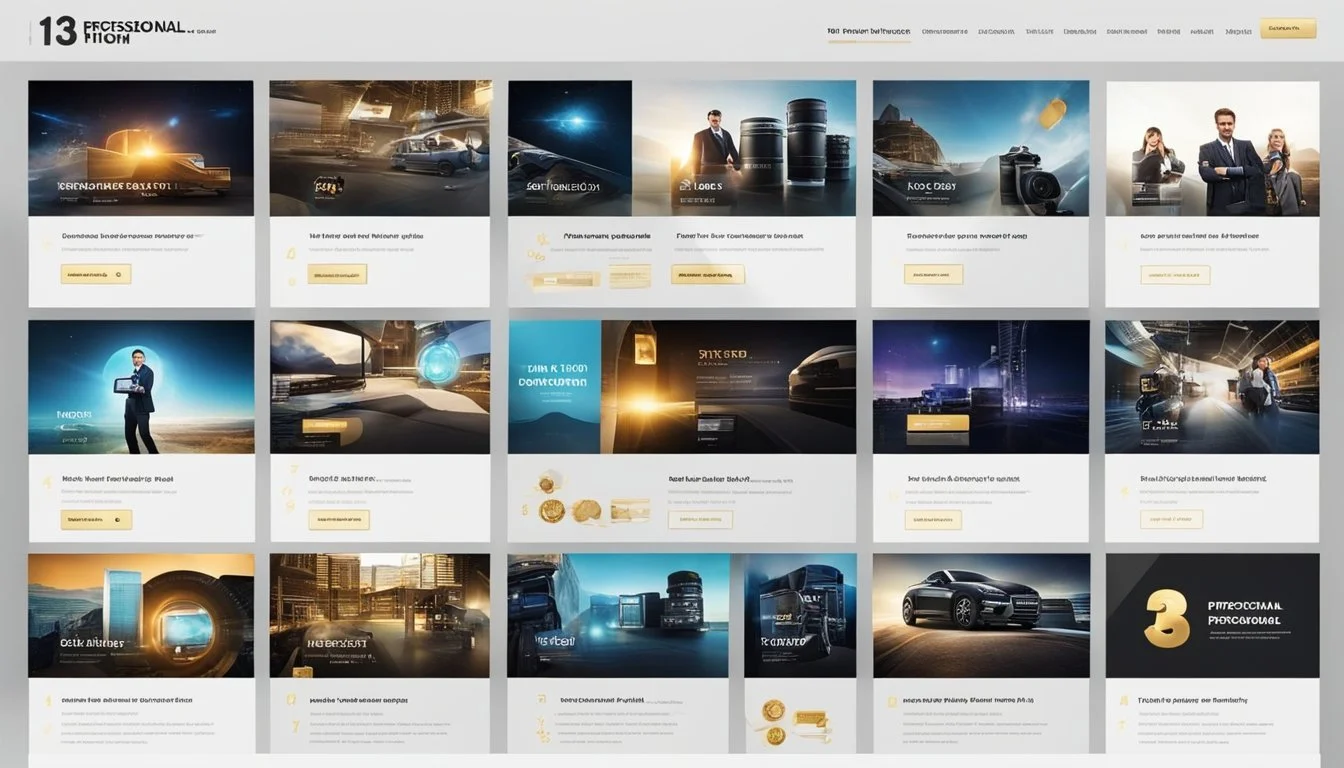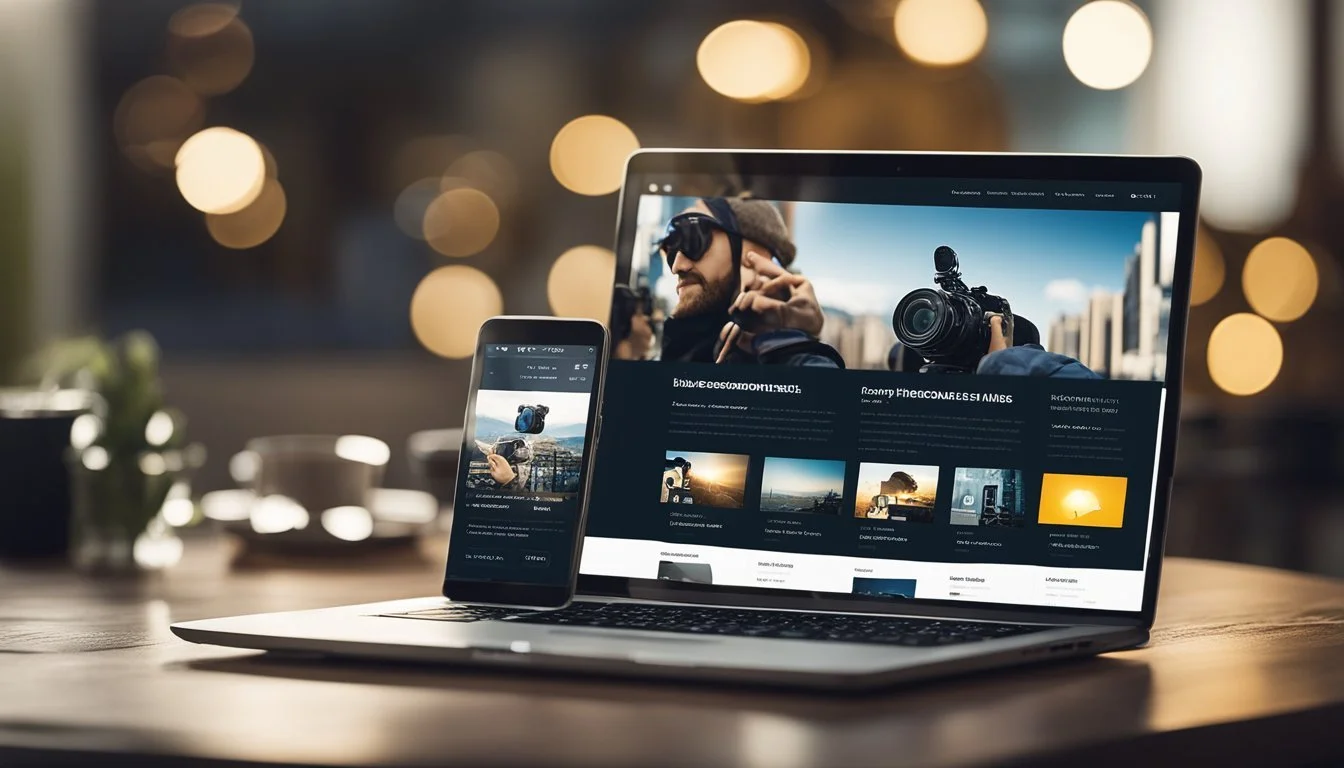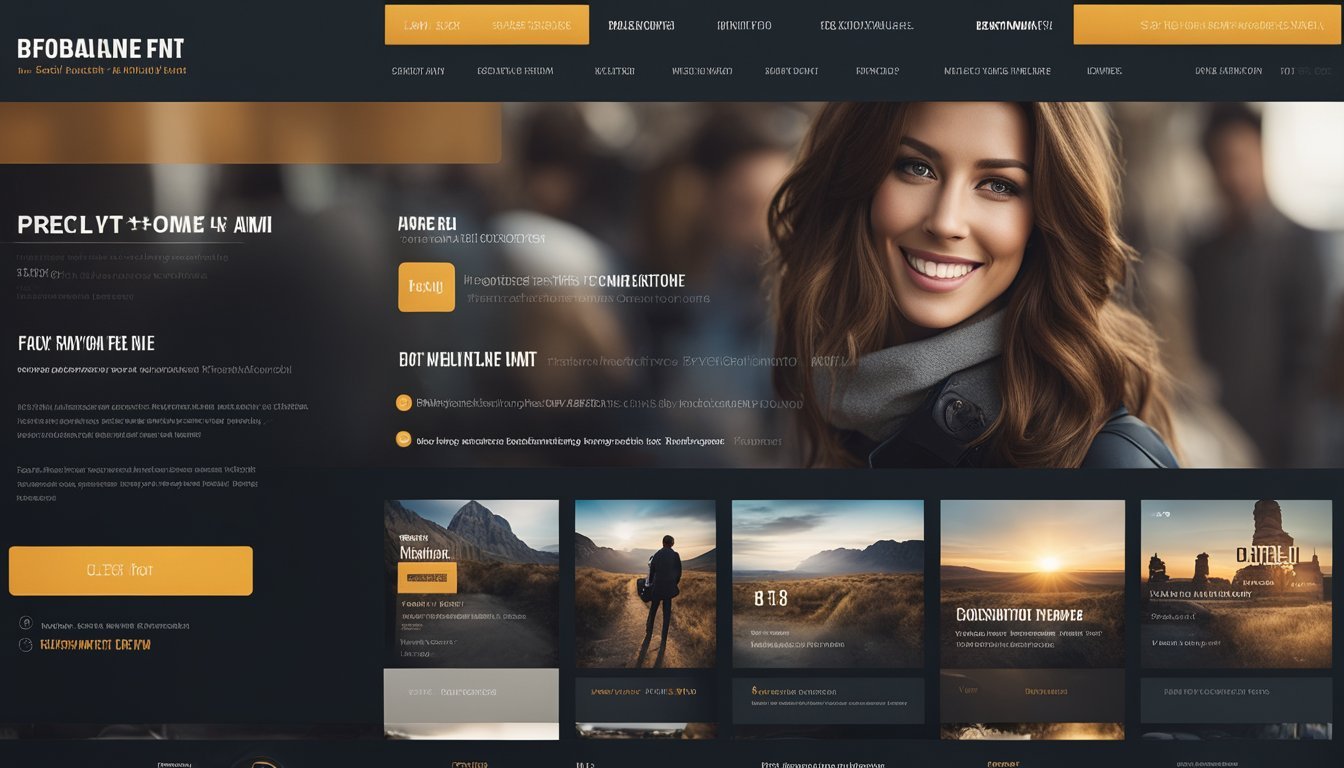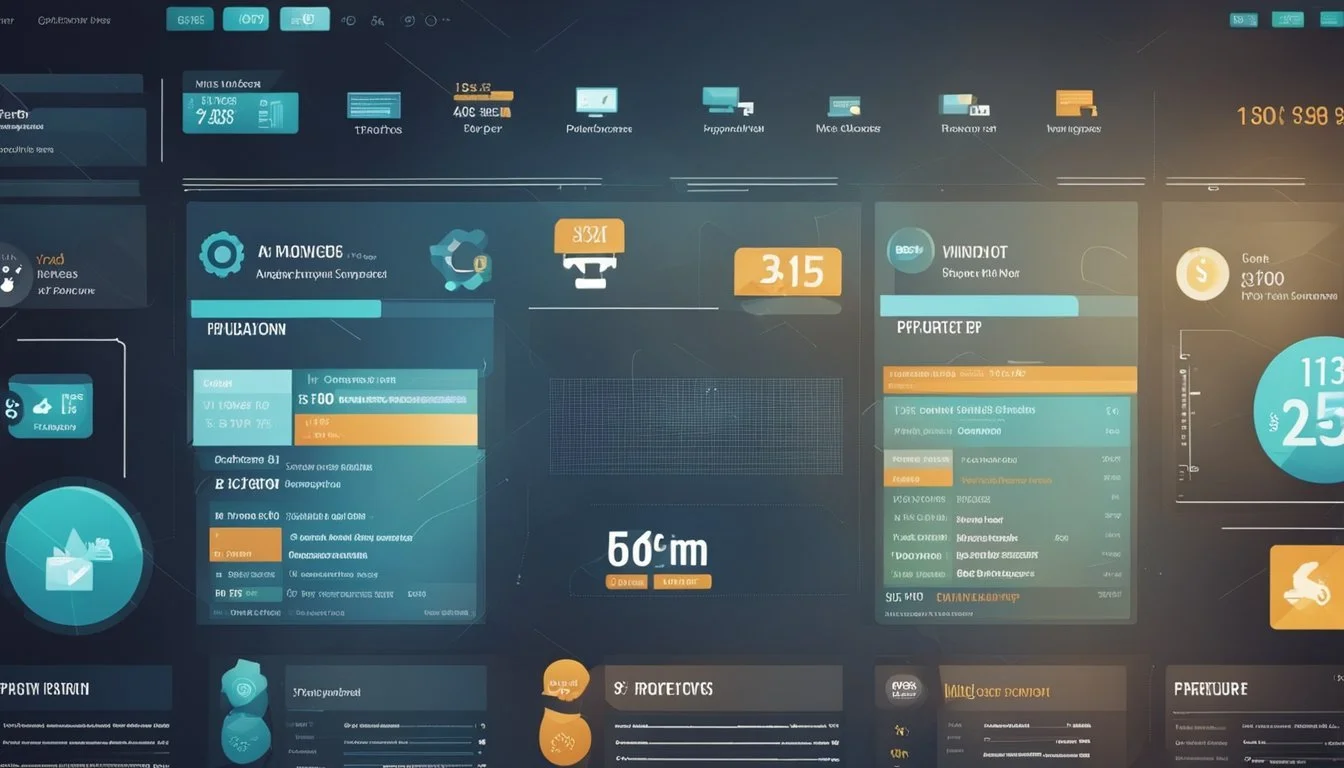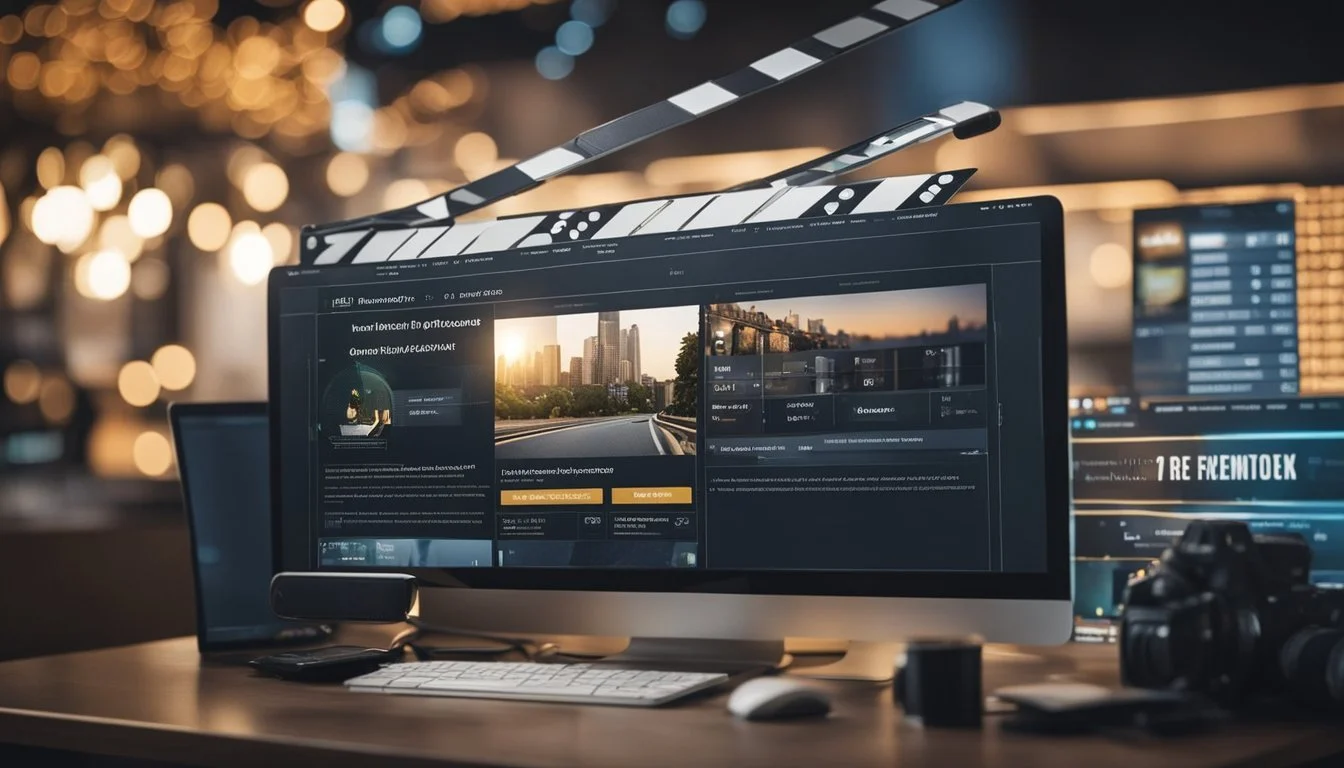13 Must-Have Features for Your Filmmaking Website
Creating a filmmaking website requires careful planning and a deep understanding of the elements that enhance user experience and professional presentation. In today's highly competitive digital landscape, filmmakers need a robust online presence to showcase their work, engage with audiences, and attract potential collaborators and clients.
A meticulously designed filmmaking website serves as a valuable tool to elevate a filmmaker's profile and showcase their unique style and portfolio. This article outlines thirteen essential features that will help filmmakers build an effective and engaging website, ensuring they stand out in the crowded digital space.
1) Responsive Design
Responsive design is crucial for filmmaking websites. It ensures the site functions well on screens of all sizes, from mobile phones to large desktop monitors.
Filmmaking websites often feature videos, images, and dense media content. A responsive layout adjusts seamlessly, providing an optimal viewing experience across devices. This flexibility can enhance user engagement.
Using responsive design principles can also streamline maintenance. Instead of managing multiple site versions, designers update a single responsive site. This efficiency saves time and reduces complexity.
Key elements to incorporate include flexible grid layouts and responsive images that scale according to screen size. CSS media queries play a pivotal role in implementing these adjustments smoothly.
Overall, responsive design ensures that users have a consistent and enjoyable experience, whether they are browsing on a phone, tablet, or computer, significantly impacting audience retention and satisfaction.
2) Portfolio Section
A filmmaker's portfolio is the heart of their website. It showcases their work and skills to potential clients and collaborators.
The portfolio should have a clean and engaging design. A simple layout helps visitors focus on the content without distractions.
High-quality visuals are essential. Use striking thumbnail images to represent each project. These thumbnails should entice viewers to click and watch.
Include a variety of your best work. Aim for a well-curated selection of around nine projects. This provides a comprehensive view of your capabilities without overwhelming the visitor.
Provide concise descriptions for each project. A brief summary of your role, the project's scope, and any notable achievements can add valuable context.
Consider categorizing your work. Grouping projects by type, such as commercials, short films, and documentaries, can make navigation easier.
Integrating multimedia is crucial. Include video clips, images, and possibly interactive elements to create a dynamic portfolio.
Ensure the portfolio is easy to update. Regularly adding new work keeps the site current and showcases your latest achievements.
Lastly, a portfolio should be mobile-friendly. Many visitors will view your site on their phones, so ensure the design adapts to different screen sizes.
3) High-Resolution Video Playback
High-resolution video playback is essential for any filmmaking website. It ensures that visitors can view your work in stunning detail, providing a true representation of your creative vision.
HD and 4K video playback support allows users to experience smooth and crisp visuals. This capability highlights the quality of your productions and elevates the user experience.
Optimizing video playback on your site involves several key steps.
Utilizing updated media players and codecs can significantly improve playback quality. This ensures compatibility with various video formats and reduces playback issues.
Another important factor is your website's hosting capabilities. Sufficient bandwidth and reliable streaming solutions prevent buffering, allowing uninterrupted viewing.
Lastly, consider the user interface for video playback. Providing features like full-screen mode, play/pause controls, and volume adjustment enhances usability and viewer satisfaction.
4) Client Testimonials
Client testimonials add credibility to a filmmaking website by showcasing real experiences from satisfied clients. These endorsements provide social proof, helping potential clients feel more confident in their decision to work with the filmmaker.
Incorporating video testimonials can be particularly impactful. Visuals combined with narratives create a compelling story that highlights the filmmaker's skills and professionalism.
Testimonials from prestigious clients or well-known brands can further boost the filmmaker's reputation. Featuring quotes from authoritative sources, like industry experts or prominent media outlets, adds an extra layer of trustworthiness.
Sharing testimonials on social media platforms can extend the reach and visibility of positive feedback. This casual, publicly visible format can make testimonials feel more genuine and relatable.
Lastly, a mix of short and long testimonials can cater to different audience preferences. Short quotes grab quick attention, while longer testimonials provide detailed insights into the client’s experience.
5) Integrated Blog
An integrated blog is essential for a filmmaking website. It allows filmmakers to share insights, updates, and behind-the-scenes content. Regularly updated blogs improve engagement and keep the audience informed about ongoing projects.
Blogs also establish the filmmaker as an authority in the industry. They can offer tips, tutorials, and reviews, enhancing the website's value. This builds trust and attracts a dedicated following.
Search engines favor websites with fresh, relevant content. An integrated blog helps improve SEO, making it easier for new visitors to find the site. This ensures better visibility and higher traffic over time.
An active blog encourages interaction. Readers can leave comments, ask questions, and share posts on social media. This fosters a community around the filmmaker's work, strengthening the fan base.
Combining visual elements like video clips and images with written content in blog posts can showcase the filmmaker's style. This creates a unique, engaging experience that text alone cannot provide.
6) Contact Form
A contact form is essential for any filmmaking website. It provides a direct line of communication between potential clients, collaborators, and the filmmaker.
Make sure the contact form is simple and straightforward. Include only necessary fields like name, email, and message. This encourages more people to reach out without feeling overwhelmed by too many questions.
Use clear labels for each field. This ensures visitors know exactly what information they need to provide. A contact form should also be mobile-friendly to cater to users on different devices.
Consider adding a dropdown menu. This can help categorize inquiries, such as project proposals, feedback, or general questions. This feature helps in directing messages to the appropriate person or department.
Don't forget to add a confirmation message. Once the form is submitted, let users know their message has been received. This small step can enhance user experience and build trust.
Lastly, make sure the form is secure. Protect users' information by using reliable security measures. This will reassure visitors that their data is handled safely.
7) About Page
An "About" page is essential for a filmmaking website. This is where visitors learn about the filmmaker's background, journey, and vision.
A well-crafted "About" page builds credibility. It can include educational background, significant achievements, and professional experiences in the industry. Including personal anecdotes and motivations can make the page more engaging.
Photos and videos add a personal touch. They provide a glimpse into the filmmaker's personality and work environment.
Contact information should be easy to find. This encourages networking and potential collaborations. Links to social media profiles and professional networks can also be valuable.
An "About" page serves as a central point of connection. It forms the first impression and can influence how visitors perceive the filmmaker’s work.
8) Service Pricing Page
An effective service pricing page is essential for any filmmaking website. Clearly displaying pricing information can help potential clients understand what services are offered and what they can expect to pay.
A three-column approach can organize different service tiers effectively. Each column can highlight key features and benefits, making it easier for users to compare options.
It's crucial to include detailed descriptions for each service. This can include specifics like the type of video production, the duration of the project, and any additional services such as editing or special effects.
Consider including customer testimonials or case studies alongside your pricing information. Real-world examples can provide potential clients with confidence in the quality and value of your services.
Transparency is important. Avoid hidden fees by listing everything upfront. This builds trust and reduces any potential misunderstandings with clients.
Using visual elements such as icons or images can make the page more engaging and easier to navigate. These visuals can also help emphasize important features of each pricing tier.
Lastly, ensure the pricing page is mobile-friendly. Many users will access your site on their phones, so the page should be easy to read and navigate on smaller screens.
9) Social Media Integration
Social media integration is essential for any filmmaking website. It connects the website with various social media platforms, creating a unified online presence.
Filmmakers should embed social media feeds on their site. This provides real-time updates, showcasing the latest projects and engagements.
Including social media buttons allows visitors to easily share content. This can drive traffic and increase visibility across platforms.
Utilizing social media plugins will streamline content management. Plugins can automate sharing, keeping audiences engaged without extra manual effort.
Encouraging followers through integration can enhance user interaction. Engaged audiences are likely to comment, like, and share, boosting your online presence.
Integrating social media can also aid SEO. Social signals, such as shares and likes, contribute to higher search engine rankings.
A seamless connection between your website and social media channels ensures that your audience remains in the loop. This fosters a loyal and informed community.
10) SEO Optimization
SEO optimization is essential for any filmmaker's website to attract organic traffic and improve visibility on search engines.
The process starts with keyword research. Tools such as Semrush’s Keyword Magic can identify relevant terms and phrases that potential viewers might use. These keywords should be integrated naturally into the website's content.
Technical SEO is another crucial aspect. Ensure the website has fast loading times, mobile-friendly design, and proper indexing by search engines. Utilizing tools like WP Rocket can help streamline some of these technical tasks.
High-quality content is key to engaging visitors. This includes blog posts, behind-the-scenes articles, and video transcripts. Additionally, creating descriptions and tags that reflect the content’s purpose aids in better ranking.
Video content should also be optimized. By including metadata, descriptions, and relevant tags, videos are more likely to rank higher on search engines. Embedding these videos in rich, informative articles can further boost SEO efforts.
Integrating social media can drive significant traffic. Promoting new content across various platforms increases the chances of backlinking, which positively influences search engine rankings.
Regularly updating the site with fresh content ensures search engines recognize the website as active, further improving visibility.
By focusing on these strategies, any filmmaking website can achieve stronger SEO performance, drawing more organic traffic and elevating the film's presence online.
11) E-commerce Capability
E-commerce capability is essential for a filmmaking website. This feature allows users to purchase products and services directly from the site. Offering a seamless shopping experience can help convert visitors into loyal customers.
Incorporate secure payment gateways to ensure customer data is protected. Options such as PayPal, credit card processing, and Apple Pay are widely recognized and trusted.
Real-time order tracking enhances the user experience. Customers appreciate being able to monitor their purchases from payment to delivery.
Multiple shipping options give customers flexibility. Depending on their needs, they can choose from standard, expedited, or international shipping.
High-quality product images are crucial. Showcase merchandise, scripts, or filmmaking equipment with clear, high-resolution photos. This aids buyers in making informed decisions.
Additionally, consider offering digital downloads for scripts, templates, or tutorials. This can broaden your customer base by providing instant access to valuable resources.
An e-commerce section should be as user-friendly as possible. Streamlined navigation, efficient search functionality, and clear categorization make browsing and purchasing straightforward.
Regularly updating your e-commerce platform is also important. This includes updating product descriptions, images, and prices to reflect current offerings.
12) SSL Certificate
An SSL certificate is essential for any filmmaking website. It establishes a secure connection between the server and the browser, ensuring that any data exchanged is encrypted. This protection is vital when handling sensitive information such as login credentials or payment details.
Visitors are more likely to trust a site with an SSL certificate. Modern web browsers, including Google Chrome and Firefox, mark sites without SSL as "Not Secure." This warning can deter potential visitors and harm your reputation.
Having an SSL certificate also improves search engine rankings. Google prioritizes secure sites, so your filmmaking website is more likely to appear higher in search results if it is encrypted.
Different types of SSL certificates offer varying levels of protection and flexibility. Multi-domain and Wildcard SSL certificates can secure multiple domains and subdomains, making them suitable for larger websites.
Implementing an SSL certificate isn't just about security; it’s about building trust and credibility. This trust is essential for attracting and retaining visitors, especially if you offer services or products online.
13) Team Members Section
A Team Members section is vital for any filmmaking website. It introduces the crew behind the scenes, highlighting their expertise and contributions.
Each member should have a profile featuring their role, a brief biography, and professional achievements. Including high-quality photographs can personalize these profiles.
Adding social media links enables visitors to connect with the team. For better user experience, consider using interactive elements like hover effects to reveal more information.
To maintain a professional layout, use consistent styling and design across all member profiles. This approach ensures a cohesive and polished look.
Overall, a well-designed Team Members section helps build trust and credibility with your audience.
SEO Best Practices for Filmmaking Websites
Improving your website's SEO can significantly boost your filmmaking content's discoverability. Focus on keyword research, on-page optimization, and content strategy to enhance performance in search engine results.
Keyword Research
Effective keyword research is crucial. Identify terms and phrases potential viewers use when searching for filmmaking content. Tools like Google Keyword Planner or Ahrefs can help.
Prioritize long-tail keywords such as "independent documentary filmmaking tips" rather than generic ones like "filmmaking."
Use a mix of high and low competition keywords to reach a broader audience.
Analyzing competitors’ keywords also provides valuable insights into what works in your niche.
Regularly update your keyword list to reflect current trends and search behaviors.
On-Page Optimization
On-page optimization involves tweaking individual pages to rank better.
Title Tags: Ensure your title tags include primary keywords for better ranking. Aim for around 60 characters.
Meta Descriptions: Write compelling meta descriptions that include keywords but also entice users to click. Keep it under 160 characters.
Headers: Utilize H1, H2, and H3 tags to structure your content and include keywords in headers.
Alt Text: Use descriptive alt text for images, which can also boost SEO.
Internal Links: Link to other relevant pages on your site to improve user navigation and authority.
Content Strategy
A solid content strategy is essential. Regularly produce high-quality content relevant to your audience.
Blog Posts: Write detailed articles on filmmaking techniques, industry news, and behind-the-scenes looks.
Video Content: Embed your videos directly into blog posts or dedicated pages.
User Engagement: Encourage comments and discussions to increase dwell time and engagement rates.
Guest Posts: Collaborate with other filmmakers or industry experts to expand your reach.
Consistency is key; maintain a regular posting schedule to keep your audience engaged and returning for more.
Design and User Experience
For a successful filmmaking website, focus on responsive design, intuitive navigation, and accessibility. These elements ensure your site looks great on any device, feels easy to use, and is accessible to all users.
Responsive Design
Responsive design adapts the website layout to different screen sizes and orientations. This is crucial for creating a positive user experience on mobile devices, tablets, and desktops.
By using flexible grids, layouts, and CSS media queries, filmmakers can ensure their website provides the best possible viewing experience. High-quality visual content such as videos and images should load efficiently and look sharp across all devices. This adaptability helps retain visitors' engagement and reduces bounce rates.
Intuitive Navigation
A clear and intuitive navigation structure is essential for guiding visitors through your filmmaking website. Menus should be straightforward, with logical categories and easy-to-find links.
Breadth in categorizing sections like "Projects," "About," "Contact," and a showcase of "Portfolio" items can help visitors quickly locate the information they seek. Adding a search function can further enhance navigability. Consider using drop-down menus, and ensure that all navigation elements are easy to spot and interact with.
Accessibility
Ensuring your filmmaking website is accessible to people with disabilities is not only ethical but also broadens your audience. This involves using semantic HTML to structure your content logically, providing alt text for images, and ensuring keyboard navigability.
Color contrast should meet Web Content Accessibility Guidelines (WCAG), and text should be resizable without breaking the layout. Using ARIA landmarks and roles can help screen readers more effectively interpret your content. Accessibility helps create a more inclusive experience for all users.
Advanced Features for Filmmaking Websites
Effective filmmaking websites offer advanced tools that enhance the viewer's experience and streamline content sharing. Two such critical features include video hosting solutions and integration with social media.
Video Hosting Solutions
Quality video hosting is essential for filmmakers. Platforms like Vimeo and YouTube provide robust options. Vimeo allows for higher quality uploads with fewer compression artifacts, which is crucial for showcasing professional work. YouTube offers extensive reach and monetization options but may compress videos more.
When selecting a video host, consider factors like upload limits, privacy settings, and analytics. Detailed analytics can provide insights into viewer engagement and demographics.
Some filmmakers might benefit from self-hosting videos using platforms like Wistia or Brightcove, which offer more control over branding and user experience. The choice of hosting solution can significantly impact how audiences perceive and interact with your content.
Integration with Social Media
Integrating social media into your website can drive traffic and engagement. Features like social sharing buttons allow visitors to easily share content on platforms like Facebook, Twitter, and Instagram.
Embedding live social media feeds keeps content dynamic and constantly updated, showing the latest posts without needing manual updates. Social authentication (login using Facebook, Google, etc.) can simplify user interactions on the site.
For filmmakers, connecting with an audience on platforms where they are already active increases visibility and fan interaction. Automated tools can help regularly post updates and maintain presence across multiple social channels without added effort. This integration fosters a more interactive and community-driven site.

